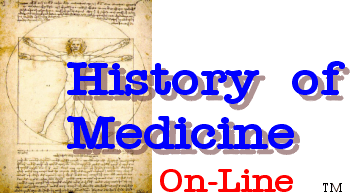| The
Documents that Produced the Laws Overturned by Roe v. Wade
Frederick
N. Dyer
|
|---|
In January 1860, The American Medical
Association sent the following “Memorial” to the governor and legislature of
each state and territory in the United States:

At the same time,
the following “Address” was sent to each State Medical Society:

The above documents
discuss the May 1859 meeting of the American Medical Association in Louisville where
the Resolutions aimed at strengthening laws against abortion were unanimously
adopted.[1]
The officers signing these two documents were not the physicians responsible
for the antiabortion effort. The Committee on Criminal Abortion who provided
the Report on Criminal Abortion and these associated Resolutions was made up of
Chairman, Horatio Robinson Storer, of Boston, Hugh Lenox Hodge, of
Philadelphia, Charles A. Pope, of Missouri, Alexander Semmes, of the District
of Columbia, A. Lopez, of Mobile, Henry Brisbane, of Wisconsin, Thomas
Blatchford, of New York, and Edward H. Barton, of South Carolina. Storer had
requested formation of the Committee in March 1857 and the Association agreed
at the Nashville meeting in May 1857. Only Storer was appointed but he was
given the authority to select other Committee members. Ill health prevented
Storer from presenting the Committee Report at the 1858 Washington meeting.
Storer did not get around to selecting the other Committee members until two
months before the Report was presented on May 3, 1859. He had already written
the Report that the members praised when they agreed to join the Committee and
agreed to add their names to it.[2]
Storer’s key role in
the effort was discussed by Henry Miller in his 1860 Presidential Address on
the first day of the Annual Meeting in New Haven, Connecticut:[3]
At
the last meeting of the Association, the Committee on Criminal Abortion, of
which Dr. Horatio R. Storer, of Boston, was chairman, made their report, which
was received and referred to the Committee of Publication. By the resolutions
appended to the report, which were unanimously adopted, the President and
Secretaries were authorized to bring this important subject, by memorial,
before Congress and the several State legislatures of the Union, with the
prayer that the laws by which it has been attempted to restrain and punish abortionism
may be revisited, and such legal enactments provided as the heinousness of the
crime demands. By reference to the proceedings of the last annual meeting, it
will be seen that the Committee on Criminal Abortion were requested to continue
their labors, “and especially to take any measures necessary to carry into
effect the resolutions reported by them on the first day of the meeting.” Under
the warrant of this instruction, the Chairman of the Committee opened a
correspondence with me, early last winter, tendering his co-operation in
carrying out the wishes of the Association, and offering to place at my
disposal extra copies of the report, and also of the papers published by
himself in the North American Medico-Chirurgical Review,
containing all the medico-legal information necessary to enable our federal and
State legislatures to act intelligently in the premises. The offer was gladly
accepted, and I am happy to acknowledge my obligations to the able Chairman for
his valuable assistance, not only in furnishing the documents referred to, but
in the preparation of the Memorial as well as of the Address directed to the
various State Medical Societies, requesting their co-operation with the
Association, in pressing this important subject on the attention of the
legislatures of their respective States. The memorial, with the accompanying
documents, was transmitted in January last to the President of the United
States and the Governor of each of the States and Territories of the Union, the
legislatures of several of them being at the time in session. What disposition
has been made of them I am not informed; but the hope may be reasonably
indulged that their Excellencies have submitted them to the National, State,
and Territorial legislatures, or will embrace the earliest opportunity of doing
so.
Miller would soon
learn that the Connecticut Legislature had received the Memorial. The Minutes
for Day 3 of the same New Haven meeting included:[4]
A communication was received from the Judiciary Committee
of the Connecticut Legislature, to which was referred the memorial of this
Association concerning Criminal Abortions, requesting the appointment of a
committee to frame a suitable bill to serve as a guide for their action.
On
motion, the paper was accepted, and the Chair authorized to appoint the
Committee asked for, and the following gentlemen were appointed: Drs.
Worthington Hooker, Conn.; David L Daggett, Conn.; D. Humphreys Storer, Mass.
Had Horatio Robinson
Storer been in attendance at New Haven he no doubt would have been selected for
the Committee. It is possible he assisted his father, David Humphreys Storer, in
preparing the result, which was a unique piece of legislation that combined “into
a single forceful act the denial of the quickening doctrine, the notion of
women’s liability, and anti-advertising principles.”[5]
It was the forerunner of similar legislation that would be passed in almost
every state and territory in the next two decades.[6]
